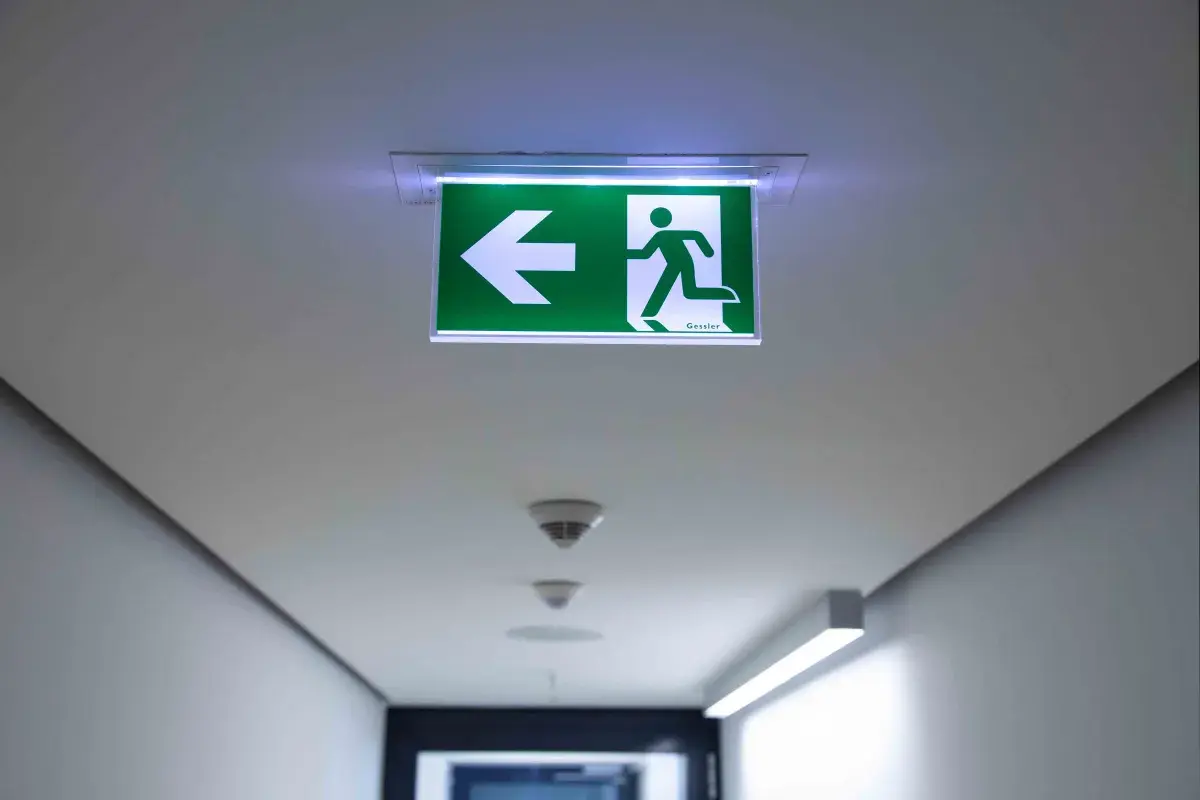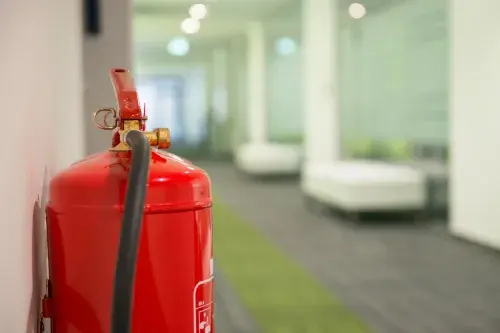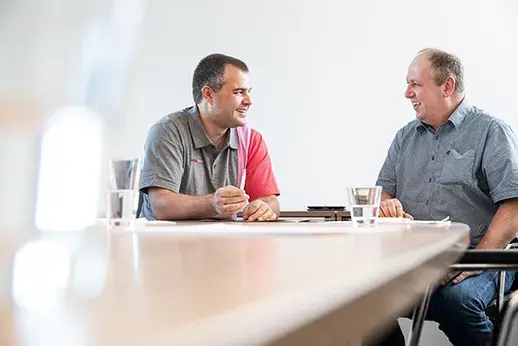Operators and users of buildings are occasionally contacted by the local fire protection authority for a fire prevention or fire inspection. CWS provides answers to the following questions:
Fire prevention inspection - What is inspected?
The fire protection facilities are checked randomly with the help of a checklist. This serves to identify and prevent dangers to life, health, property and the environment. The fire prevention inspection thus identifies conditions that pose a fire risk. On the basis of this, the authorities can initiate appropriate measures to enable rescue, especially of people, and effective fire-fighting in the event of a fire.
The official fire prevention inspection is prescribed by law, in accordance with the Administrative Regulation (VwV). As a rule, it applies to special buildings, such as factories, places of assembly, high-rise buildings, high-bay warehouses, schools, kindergartens, clinics, hotels and retirement homes. Residential buildings are exempt.
The inspection regulations differ from federal state to federal state. In general, however, the Länder delegate fire prevention inspections to the municipalities. In general, it is common for the fire brigade to participate in the fire inspection. This is a recurring inspection that takes place at intervals of between three and a maximum of six years. If deficiencies are found in your property, the authorities will visit again for the fire inspection at shorter intervals.

How does the fire inspection work?

The details of the fire inspection depend on the state-specific requirements, which are laid down in the administrative regulation (VwV).
Basically, the inspections follow the pattern outlined here:
- The contact person for the authorities is the owner or user of the object to be inspected.
- The authority announces the inspection in writing at least ten days before the date.
- Any defects found are documented on the spot with the help of a checklist.
- Initial inspection results are discussed with the persons responsible for the property in a first evaluation meeting immediately after the inspection.
- In the case of defects, the owner or user receives a written list, possibly with a request for a statement and/or a request for rectification.
- A deadline is set in writing for the rectification of defects.
- A follow-up inspection may be carried out to check whether the defects have been remedied.
- Finally, the persons responsible for the property receive a report on the results of the inspection.
What do authorities look for during a fire prevention inspection?
The focus is on structural, technical and organisational fire protection facilities. A major focus is on escape routes.
In the event of an emergency, they serve not only as an escape route for people, but also as an emergency route for the fire brigade. Attention is paid to design, signage, lighting, accessibility (are the routes kept clear?).

The condition of fire doors and gates is on the checklist of the fire prevention inspection, as are fire alarm systems, extinguishing water supply, including tapping points and smoke heat extractors. The inspectors will also want to look at storage and staging areas for the fire brigade, as well as alarm and fire brigade plans. You may also be asked about the training of fire safety assistants. For this purpose, the inspectors can use certain checklists to guide them during the inspection.
The inspector summarises the result of the official fire prevention inspection in a report. It contains all the points checked. Defects are usually documented in a photo and attached to the minutes. Most federal states provide for an order to eliminate defects. This is then part of the fire prevention documentation, which in turn has legal effect. The content is binding for you.
How can you prepare for the fire inspection?
There are two ways: Firstly, you should ensure that the fire safety officer of your property is present during the official inspection. He or she can expertly answer questions and explain special features.
Secondly, make sure that fire protection-relevant documents, such as the current fire protection concept, test documentation of fire extinguishers, fire doors, hydrants, smoke heat extractors, etc., are up to date.
If you have missed deadlines, commission an experienced after-sales service such as CWS Fire Safety to make up for the inspection of the fire protection systems before the authorities visit to avoid complaints. Contact us now.

When the fire inspection is announced, the fire protection authority will usually send you a list of the technical (fire protection) certificates that need to be submitted. In a well-organised building, the fire prevention officer will have these documents at hand anyway.
A few days before the fire prevention inspection, a tour of the building is recommended. Attention should be paid to escape and rescue routes, fire detectors, portable fire extinguishers and wall hydrants. Accessible escape and rescue routes are made free of fire loads and equipment. Missing fire protection and escape route signs are installed.
What benefits do you have from the fire inspection?
From the fire prevention protocol that is handed out afterwards, you can read indications for optimising fire protection in your property. On the one hand, the fire prevention officer can take the information into account in his regular internal inspections. On the other hand, the elimination of the deficiencies listed in the protocol will improve the fire protection in your property in the long term, which can have a positive effect on discussions with insurance companies.
Important: The fire prevention inspection does not include a complete inspection of the structural or technical installations from every risk-relevant point of view.
Conversely, those responsible for the property should not sit back and relax in the event of a finding without any identified defects. They are still obliged to fulfil the legally required protection goals according to the administrative regulation (VwV) in order to be on the safe side legally.
CWS Fire Safety is your fire protection partner
When it comes to fire protection, you will find competent contacts at CWS Fire Safety. Get in touch with your regional contact.
Who pays for the official inspection?
In many cases, Länder and municipalities provide for a fee as well as travel and other incidental costs for a fire inspection. The costs vary. Mostly they depend on the time required for the fire inspection and the respective qualification of the inspector. The expenses are usually borne by the operator or user of the building.
